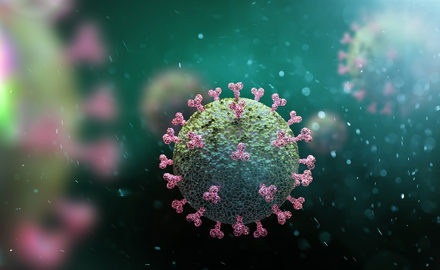COVID-19 and the pathology workforce
Following disruption caused by COVID-19, the College has serious concerns over preparations to deal with the backlog of non COVID-19 related illness, especially cancer care, and the related surge of demand for pathology services, particularly that related to cancer diagnosis and treatment.
Dr Mike Osborn, College President said:
‘While we welcome the £1billion to tackle the elective backlog promised by the Chancellor at the Spending Review, pathology workforce shortages highlighted ‘pre-COVID’ remain. Although recruitment into histopathology has increased, there remains a 25% shortfall in staff able to report results, with some regions having even higher shortages.’
Workforce pressures across the four UK nations are being compounded by the pandemic. There have been reductions in patients seeking help for their symptoms, including a significant decline in referrals from primary care leading to substantial delays in diagnosis and a significant backlog of cases.
Building the cancer workforce, not just in histopathology, but also in haematology and other areas of pathology, has to be a key investment priority for government. Without this investment there will be no capacity for pathology to deal with any increase in workload associated with efforts to overcome this backlog.
As well as more investment to recruit and retain more pathology staff, we also would like to see more training places, better IT for day-to-day work and capital investment to implement digital pathology more widely, so staff can work more efficiently and flexibly.
The College signed a letter from Cancer Research UK to leaders of the four UK nations asking them to ensure cancer services are protected and to invest in workforce and equipment.
A recent report from Cancer Research UK Estimating the cost of growing the NHS cancer workforce in England by 2029 shows that for the histopathology workforce, without targeted action and investment, the number of histopathologists is set to reduce from the existing shortfall by an additional 2% by 2029.
Workforce challenges
There are concerns for histopathology nationally regarding staffing and lack of budget to run labs optimally. Institutions have seen an additional impact of the pandemic as pathology staff are self-isolating or ill; being diverted to other activities such as running the increased mortuary service, and some biomedical staff have been redeployed to mortuary and microbiology labs. Therefore, capacity to respond to even normal levels of NHS cancer activity is further reduced, and any “surge” in cancer services will be difficult to cope with.
Our transfusion medicine colleagues have concerns over the ability to respond to the increasing blood requirements when ‘normal’ or near-normal service resumes. The blood services will need to be kept informed of plans at a local and national level to reinstitute elective surgery in order that blood collection can be adjusted accordingly. Increasing chemotherapy is also likely to increase demand for blood. This is going to be on a backdrop of a potentially reduced donor base due to ongoing COVID-19 infection/ social distancing requirements.
Technological infrastructure
Urgent changes are needed to support our return to core services. Rapid replacement of at risk outdated and at-risk laboratory information management systems (LIMS - lab computers that handle all the results) is key to de-risking future function and roll out of digital pathology is urgent.
As an exemplar of huge change at scale during the period of the epidemic, our laboratories, working with NHS Digital and NPex, have rolled out data connectivity between the vast majority of laboratories to allow reporting and transfer of results for COVID-19 testing, a rapid and transformational change for the future, and one with much wider capabilities in allowing network working.
Rapid IT infrastructure transformation, hardware to replace the nearly 30% of Laboratory Information Management Systems (LIMS) that are virtually obsolete, connectivity to link systems, and, for histopathology and haematology, digital imaging will be key to making services more stable and efficient. There have been some good examples of single LIMS roll outs in Wales that have made patients’ test results more accessible, and able to be reported across the country. Similarly, some regions have good systems that link many hospitals and indeed some acute and primary care systems. These models need to be widely adopted. LIMS are vital to effectively manage samples, and associated data and automate workflows.
Digital pathology
Digital pathology (whole slide imaging) is a technology that allows glass histopathology slides to be reviewed digitally on a computer screen, rather than with a microscope. As a result, it is a technology that can transform pathology services in the NHS and beyond. The technology is relatively new and rolled out in a relative minority of labs and but increasing numbers are now using it for substantial amounts of diagnostic work.
Digital pathology also facilitates remote working in several ways which are useful during the pandemic and going forward will help with staffing issues - home reporting, avoiding the need to be physically in the same space as a colleague giving a second opinion, and facilitating trainee pathologists in learning.
Any investment should also build on the initial investment of the NHS to develop centres of excellence in digital pathology nationally. These centres can help with any further expansion of the technology across the NHS, by sharing knowledge and standards. It is the view of the College that digital pathology should be centrally funded and rolled out nationally in a similar way to digital radiology.
Also on the agenda








